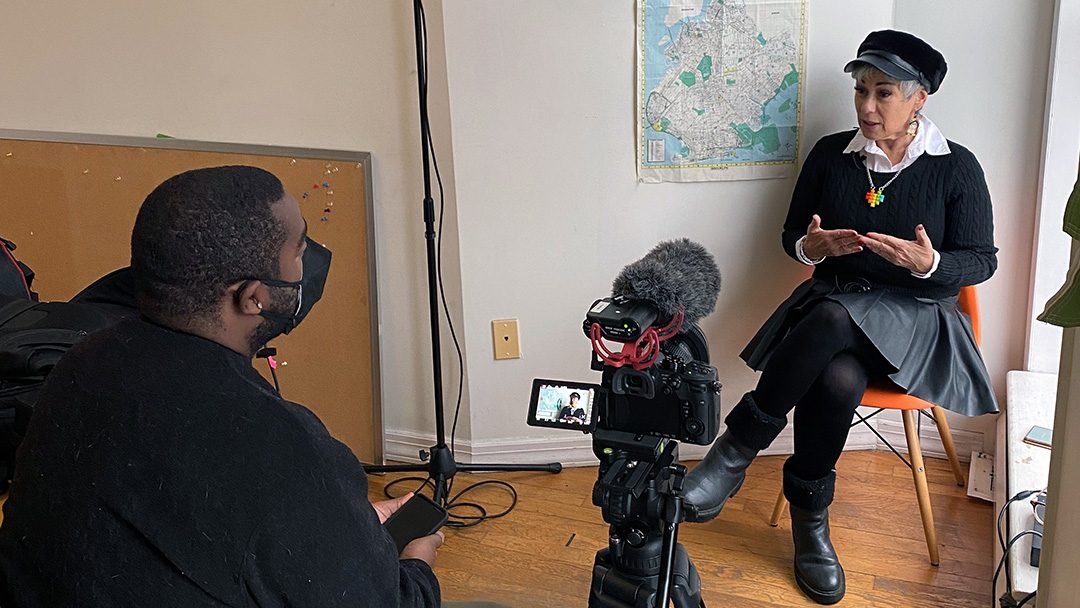
Elders’ stories about transportation access are grounded in different stages of life as individual transportation needs shift over time, as students commuting to school, employees commuting to work, and elders commuting to medical appointments, family members, and friends. Some of the elders moved from neighborhood to neighborhood in Brooklyn and other parts of the city, and some of them have lived in the same place their whole lives. Now, they live in public housing, co-ops, or rentals in Fort Greene, Clinton Hill, and Bedford-Stuyvesant, and they see how transportation access has improved since “the gentrifiers came.”
But even with these improvements, elders talk about how they still face daily challenges with pedestrian safety and public transportation access. They also describe their individual and collective activism to make the city accountable to their transportation needs.
Age-friendly Myrtle Avenue
In 2015, the Myrtle Avenue Brooklyn commercial district was designated as an Age-friendly Neighborhood by the New York City Council and New York Academy of Medicine. This designation acknowledged the area’s many elements that make it “friendly” for older adults and helped continue programming and advocacy led by the Myrtle Avenue Brooklyn Partnership for local elders and the Myrtle Avenue Senior Advisory Council.
Anthony Geigel (Marcy Houses)
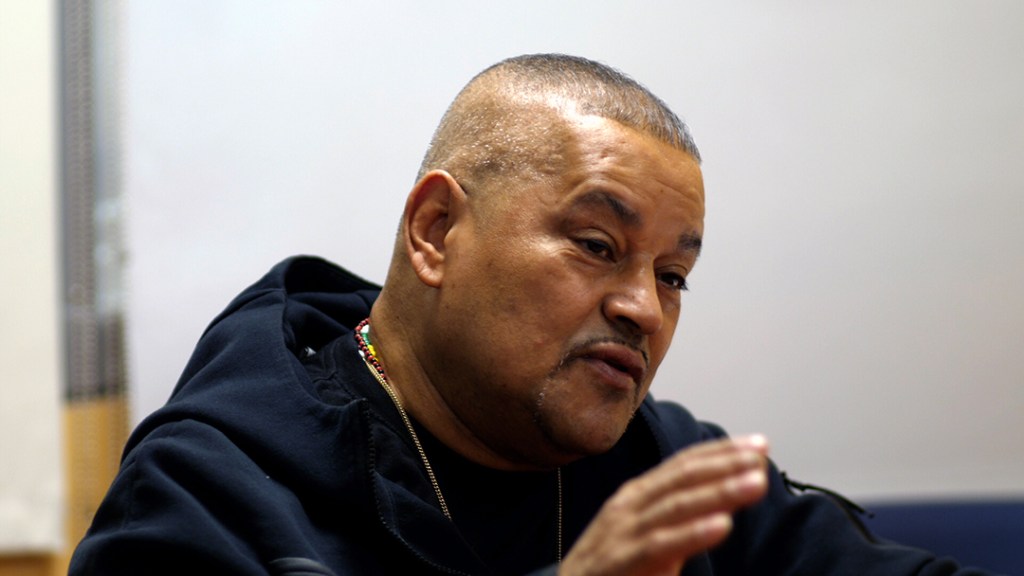
Anthony Giegel (Tony G.) is a 64-year-old community activist and organizer and father of four. He was born and raised in Marcy Houses, where he currently resides, and is an active community presence, organizing activities for youth for the last fifteen years. Giegel says that his approach to youth development is based on prevention: “if I can catch them before they catch me, then I’m doing my job.”
Tony G. believes that Marcy Houses residents don’t get the same level of public services and investment as other communities within the five boroughs and that this can be clearly seen by examining the locations of ADA-accessible subway stations. He believes accessibility is a major area for improvement in terms of both maintenance as well as expansion. Moreover, he believes ACCESS-A-RIDE service is unreliable and unsatisfactory.
“If you look at the neighborhoods [that are getting elevators at subway stations] and got ‘em running, it’s the areas with money.”
Salimah Malik (Marcy Houses)
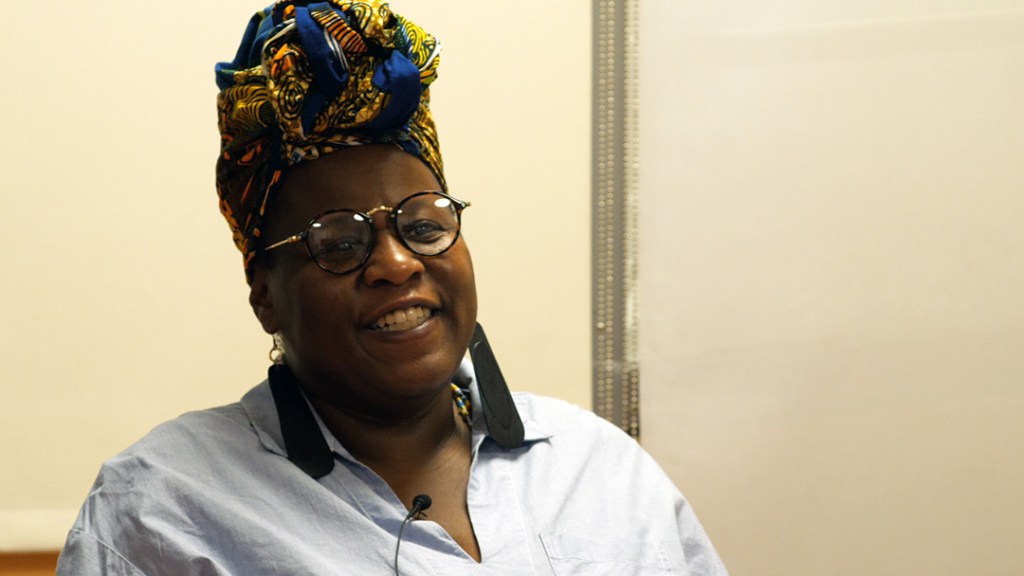
Salimah M. is a 54-year-old Black Muslim community activist and organizer and self-described “Auntie” who has lived in Marcy Houses since the mid-1970s. She describes her parents as Pan-Africans and notes they were members of The East, a 70s-era Pan-African community organization based in Bed-Stuy and that her first job was at The East’s food co-op.
“Transportation in this area has changed expeditiously because of the gentrifiers. The gentrifiers have actually improved transit here because the gentrifiers have made the [B57 bus] reliable. I never took the 57 growing up. We never took it because it never came. The G train was very unreliable. Now it’s 4–7 minutes. It’s sad because you see the disparity and the importance of who is important and who is not. The majority of the people who live here are working class people. You mean to tell me because the color of the skin of the people who ride mass transit now in this area, it’s more reliable?”
“What needs to be improved is that somebody needs to physically come out every once in a while and do surveys and ask people what is going on. Interacting with people has to be part of what makes this transit system for the people.”
Adrienne Gantt (Clinton Hill Coops)
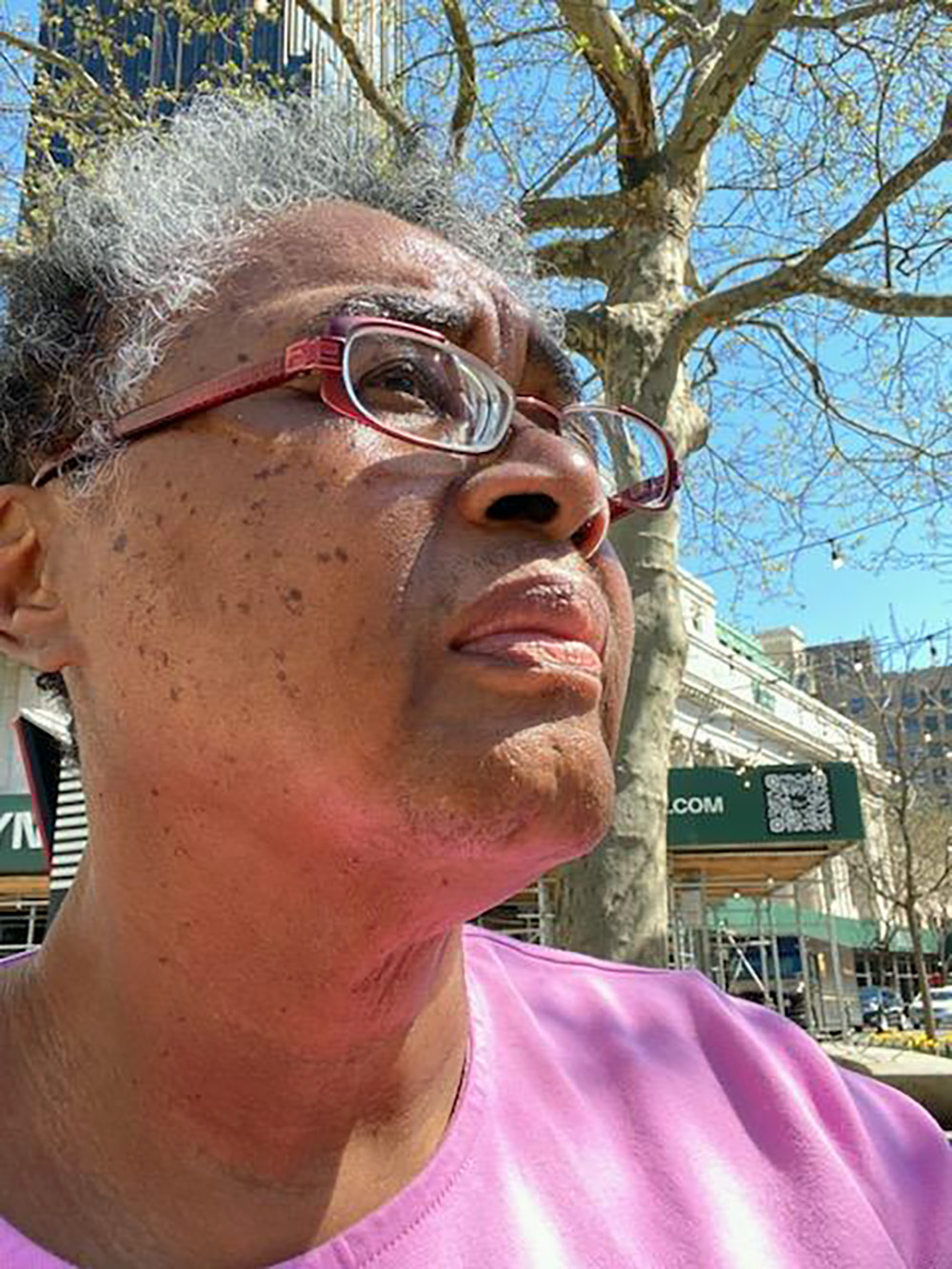
Adrienne Gantt grew up in Jamaica, Queens, a “transportation desert” at the time. She walked three miles to school so that she could attend an integrated school. She has faced genetic mobility challenges since she was 12 and as an adult has always lived near public transportation.
ACCESS-A-RIDE Access
“I’ve had trouble…with ACCESS-A-Ride and the vehicles that they send. And nobody has a step so that you can get in…I’ve had to call and say, no, send me something else…and that’s going to take at least another hour. I mean, that’s just unreasonable. I can’t get into a car, I don’t have full range of motion with my joint.”
Bus Access
“The bus step doesn’t go down any lower, and you have to fight with them to have them put down the ramp…They’re supposed to put down the wheelchair ramp to allow me to access it…(they will) absolutely will not do it, (they say) ‘get on the bus.’ ” She has to travel when the buses are empty and uses the app for that. Otherwise, she can’t get on the bus.”
Bike Lanes
“They have built bike lanes, I am all for biking. My issue is that cyclists refuse to see themselves as vehicles that belong on the street. They don’t think that traffic lights or signs or anything apply to them. And it is particularly bad along Flushing Avenue.”
Future Solutions
“It would be better if all of these systems were a bit more user friendly….it would be wiser to work on making all of those public spaces safer and more accessible than retrofitting to prevent fair beating. And certainly, having a free subway system would do that. The stations that need to be made more accessible can be made more accessible and maintained.”
John Dew (Clinton Hill Coops)
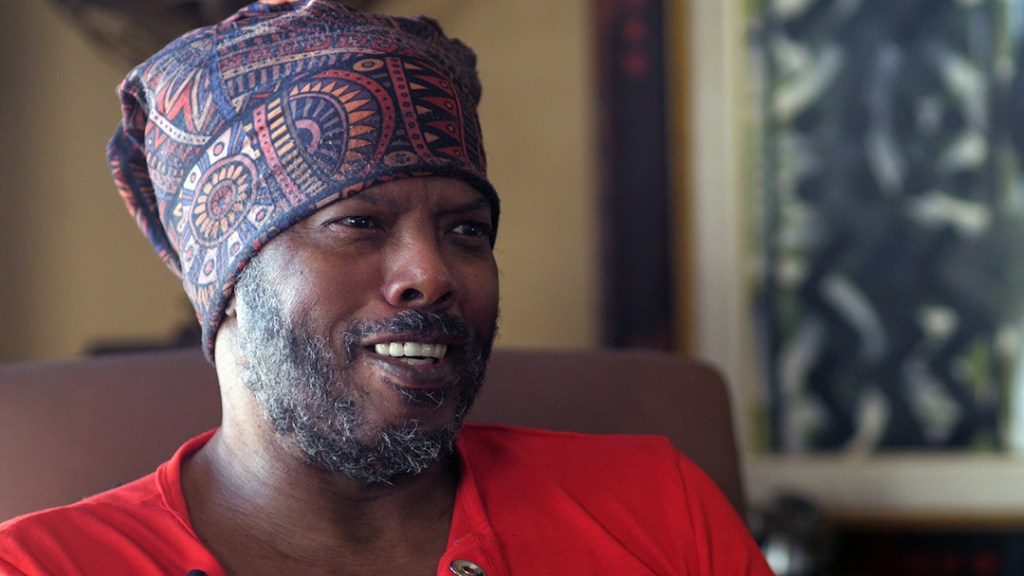
John Dew remembers riding the subway as a young teen. “I went to Brooklyn Technical High School. At age 13, I had to take the train from East New York to a few blocks from here. Well, as I recollect, it was a wonderful experience.” But he also remembers that it was a different time when there was little public reporting about incidents on the subways. John Dew has been actively involved in transportation issues since joining Community Board #2 two decades ago. He now serves on the Transportation and Public Safety Committee and the Land Use Committee.
Now, because of his difficulty with mobility, John Dew tries not to cross any streets.
“And I haven’t actually tried…crossing the streets using a walker. The notion of that is scary as heck, I will tell you, because you are unsteady. And because you cannot control traffic, you feel a total loss of control over your life during the period of time that you are in that crosswalk. I will not do it. I haven’t had to do it. But the bus stop is right here. Fortunately, my bus goes from [home] directly to the hospital. I only have to take one bus. So that’s doable. Uncomfortable, yes, but doable.”
“Transportation involves everybody. In order for it to be effective, it needs to consider everyone. And you cannot make changes in a very structured environment without consulting the folk that are impacted by it.”
ADA Accessibility and Bathrooms
“Downtown Brooklyn was rezoned back in 2003…We have this expansive growth of buildings [in downtown Brooklyn] and no ADA compliance.”
“Every train station should be made ADA compliant…”
“The other thing we asked for was public toilets. You should not have to go into a department store to the basement to use the public restroom. We don’t have that yet.”
Community Consultation
“We’re getting more high rise buildings, we’re getting more immigrant population, we’re getting more commercial, we’re getting more everything. We’re not getting more streets.”
“You got to assess what those impacts are, and mitigate, to a certain extent; this should be a negotiation, not a dictation, from folks that are not involved in the communities that are affected by the changes that are proposed.”
Lifting Everybody Up
“You could always pick out isolated instances of things that have gotten better. But when you look at the overall picture, the African American community remains very much at a deficit in these United States. When there is enough to go around for everybody it gives enough to go around to satisfy and lift everyone up.”
Long Term Plans
“If you are wanting folk to go to a bus stop…the bus stops themselves need to be comfortable.” Most of the bus stops are without seating. What is the long term plan to accommodate every bus stop with some form of seating and some form of shelter so that folk don’t have to be rained on and snowed on or have the sun shining directly on you?”
Carole Imani Parker (University Towers)
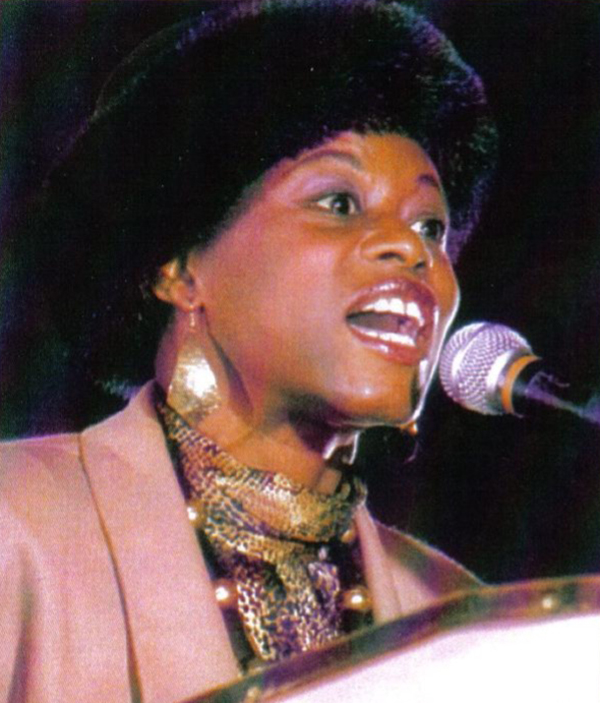
Carole Imani Parker grew up within an extended family in Harlem in the 1940s. Her grandmother was a domestic worker and her father a bus driver.
“We traveled primarily by double decker bus, and in some way on the subway as well, which had straw seats. So there was no real rapid transportation as we have it today.”
She left to live in Brooklyn—“a foreign country”—when she was 20. She eventually became a secretary, went back to college, and was also a poet who performed at The East in Bedford Stuyvesant. With roots in the Baptist church, she explored world religions, became an interfaith minister and eventually came back to her roots as part of Emmanuel Baptist Church where she was superintendent of Sunday School for twenty years.
ACCESS-A-RIDE
She now uses ACCESS-A-RIDE due to health challenges.
“I don’t know what we would do without ACCESS-A-Ride because it has really enabled me. Number one, I get to see my mother who’s in a nursing home for four years. And I would not have been able to do that. But there are still problems.”
Speaking Up
She works with elders on ACCESS-A-RIDE issues, through Myrtle Avenue Brooklyn Partnership Senior Advisory Council and Emmanuel Baptist Church. ACCESS-A-RIDE is a “challenge physically and mentally, not available in emergencies and sometimes simply not available when called. Some people who really need it have given up and just stay at home.” Her advice to other older adults: “be proactive and maybe get together with other people to see if you can, as a group, sign a petition or whatever, to get the improvements that you’re looking for.”
Joan O’Bryan (Willoughby Walk)
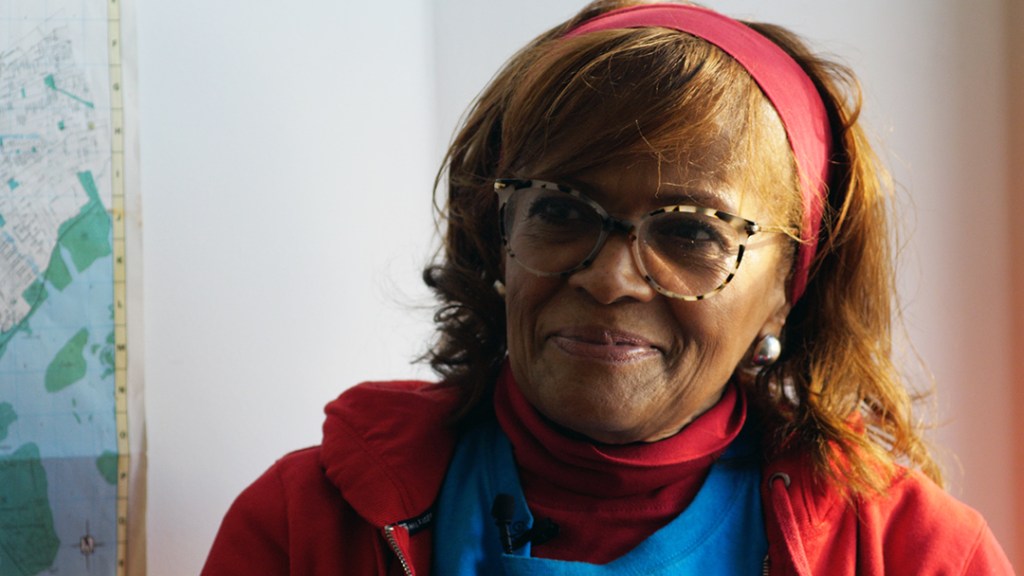
“I grew up in Brooklyn, and we started out in a housing project. My father was a veteran of World War II, and they had built the Marcy Avenue projects…for veterans and people who worked in the Navy Yard.” Her father also worked as a “track man” for the MTA.
“My biggest fear sometimes on the Myrtle Avenue bus is that I can’t get off because it’s so crowded. And all these people are packed in the front of the bus where they actually tell us as seniors, ‘Why don’t you, sit in the front of the bus, [but] then I can’t get through.’”
She worked with other seniors and the Myrtle Avenue Brooklyn Partnership on a petition to address overcrowding and collected 1,500 signatures and also organized a rally on August 8, 2022.
Clinton Washington Subway Station
“That station has always been kind of dark and dismal. I don’t use it anymore. It’s too dark to walk down those steps. So dark. My neighbor, who lives around the corner from me, broke her leg. She was running, trying to get to the train. She slipped right down, she didn’t see what was on the steps…Thank goodness for some of the ADA laws because they built these elevators by the train.”
Future solutions
“I would ask the Department of Transportation to come out and actually monitor the ridership on the Myrtle Avenue bus and see how that has changed. And I would like them to insists that the bus runs on a schedule.”
Valerie Glasgow (Stonewall House)
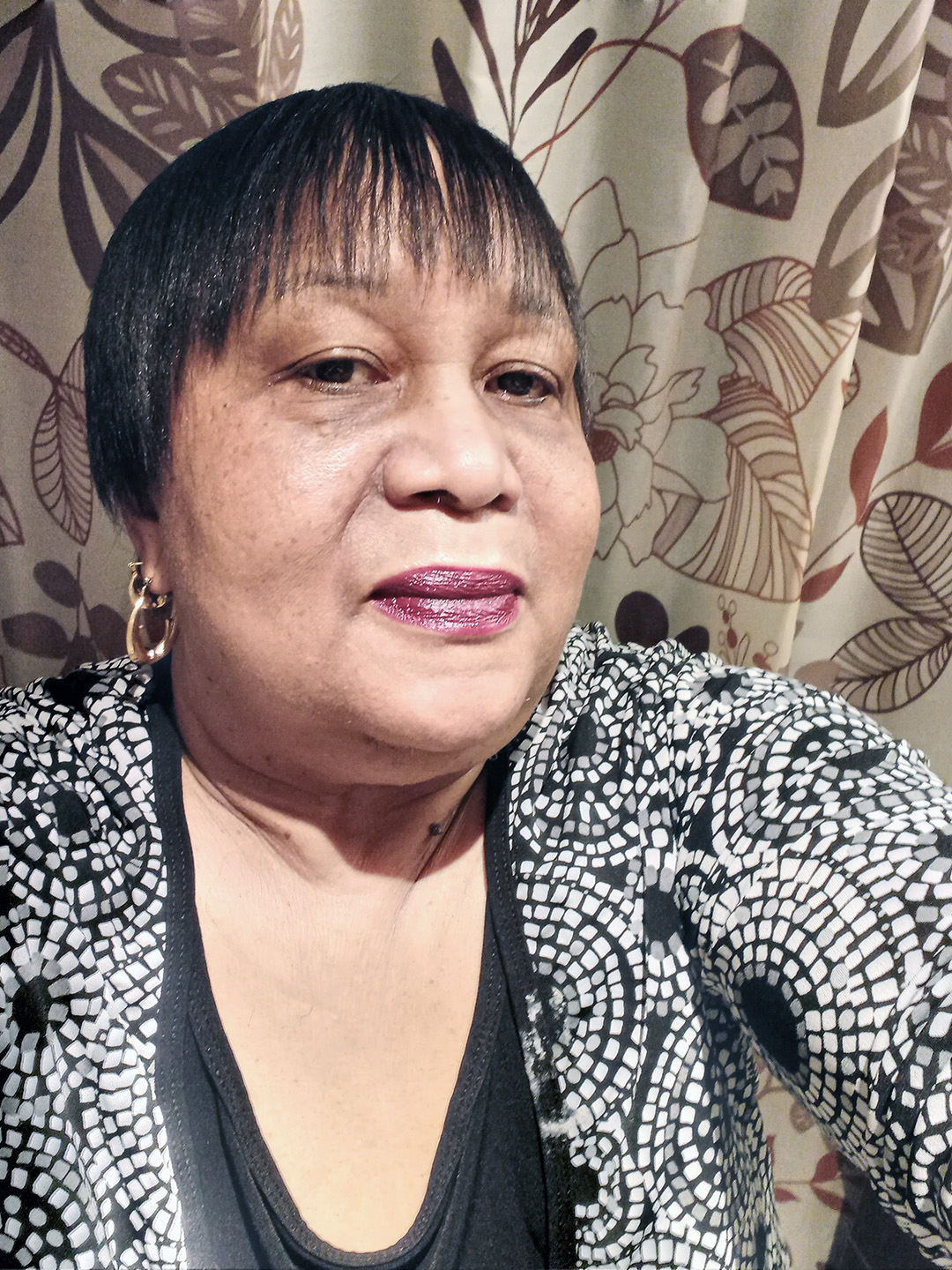
Valerie Glasgow grew up on St. John’s Place, where she took the bus to school.
“My mother took the train and the bus going to work. My sister and my brothers, all of us, took New York City Transit. We didn’t drive because we lived in Brooklyn. So [there] was no need to drive because we had accessible buses.”
She worked for NYC social services but is now retired. She now uses ACCESS-A-Ride due to a major surgical procedure on her spine, but [the service] has “gone downhill…especially after COVID.”
Speaking Up
“A lot of people are afraid to say something. I’m not afraid to speak up for myself. I’ve worked for years, I pay taxes. I’ve gone to work in snow, rain, everything. Now that I’m a senior citizen, don’t treat me like I’m a second class person. I fight for my rights. You just can’t hand me anything and think I’m going to accept it. Because I’m not. And we shouldn’t have to be made to think that we have to accept ill treatment.”
Pedestrian Safety
“You know, sometimes it’s kinda hard to cross the street because you [have] the people with the bikes. Instead of obeying the traffic lights, they ride straight through and you try to cross and they’re zooming down. Do you have to play dodgeball with cars and bikes?”
Subway Fears
“I don’t ride the trains. I will take a bus. I will take four buses to get where I have to go before I go under the ground. First of all, when the train stops under the tunnel, I can get an anxiety attack” thinking about being in a stalled train with no announcements and not knowing what’s going on.
Charles Hill (Marcy Houses)
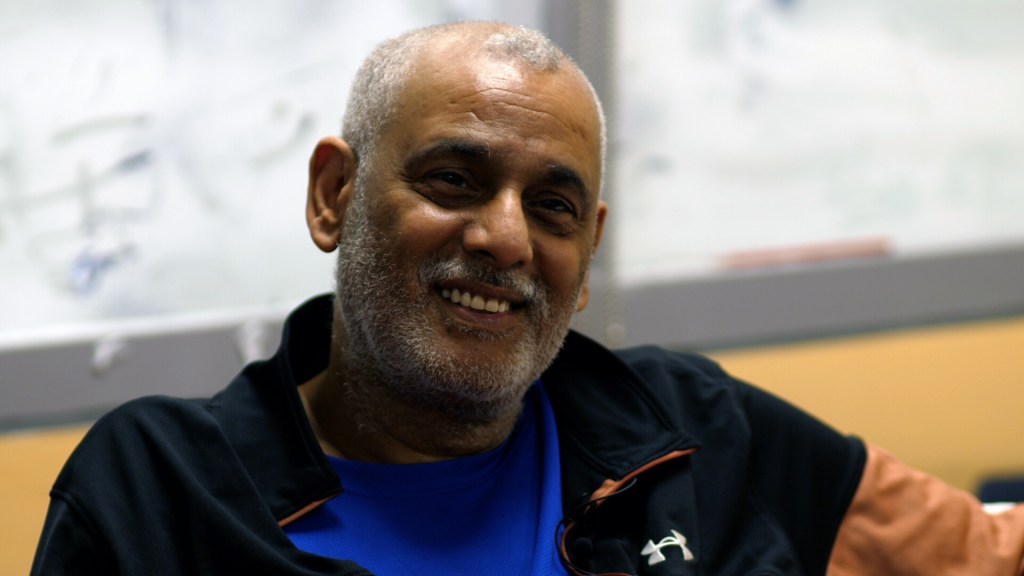
Leanna Hughes (Marcy Houses)
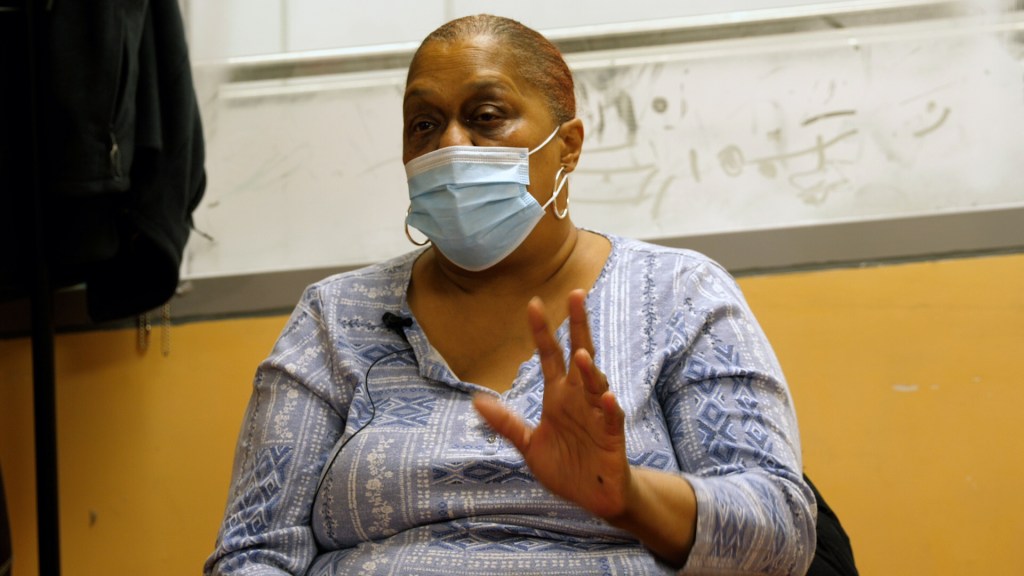
Joel Johnson (Marcy Houses)

Gabriel Skop

John Sylman (Marcy Houses)

Vicki Winters (Stonewall House)
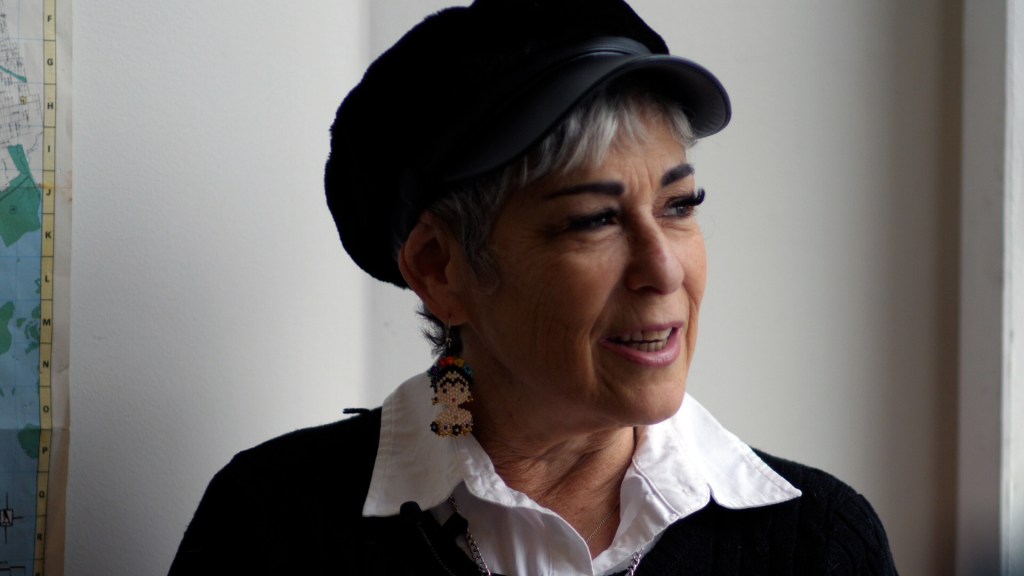
Elevated Voices is a collaboration between Preserving Activism and Alan Minor and Luke Ohlson of 7Cinema.
Thank you to all those who contributed to this project :
- Myrtle Avenue Brooklyn Partnership (Ryan Greenlaw and Alice Tavener)
- Marcy Houses (Dawnette Pinkney)
- Grand Street Settlement (Angela Goodwin)
- Pratt Institute, Foundation Expanded (Corinne Ullman and Andrea Merkx)